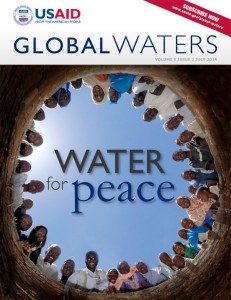Prevalence of antibiotic resistance in bacteria isolated from drinking well water available in Guinea-Bissau (West Africa). Ecotoxicology and Environmental Safety, 106 (2014) 188–194.
A. Machado1; A.A. Bordalo2
1Laboratory of Hydrobiology and Ecology, Institute of Biomedical Sciences (ICBAS-UP), University of Porto, Rua Jorge Viterbo Ferreira 228, P 4050-313 Porto, Portugal; Interdisciplinary Centre of Marine and Environmental Research (CIIMAR/CIMAR ), University of Porto, Rua dos Bragas 289, P 4050-123 Porto, Portugal.
Electronic address: anaphmachado@gmail.com.
2Laboratory of Hydrobiology and Ecology, Institute of Biomedical Sciences (ICBAS-UP), University of Porto, Rua Jorge Viterbo Ferreira 228, P 4050-313 Porto, Portugal; Interdisciplinary Centre of Marine and Environmental Research (CIIMAR/CIMAR ), University of Porto, Rua dos Bragas 289, P 4050-123 Porto, Portugal.
Abstract: The dissemination of antibiotic-resistant bacteria and the spread of antibiotic resistance genes are a major public health concern worldwide, being even proposed as emerging contaminants. The aquatic environment is a recognized reservoir of antibiotic resistant bacteria, and antibiotic resistance genes have been recently detected in drinking water. In this study, the water quality and the prevalence of antibiotic resistance of heterotrophic culturable bacteria were characterized seasonally in wells that serve the population of Guinea-Bissau (West Africa) as the sole source of water for drinking and other domestic proposes.
The results revealed that well water was unfit for human consumption independently of the season, owing to high acidity and heavy fecal contamination. Moreover, potentially pathogenic bacteria, which showed resistance to the most prescribed antibiotics in Guinea-Bissau, were isolated from well water, posing an additional health risk. Our results suggest that well water not only fosters the transmission of potential pathogenic bacteria, but also represents an important reservoir for the proliferation of antibiotic resistant bacteria, that can aggravate the potential to cause disease in a very vulnerable population that has no other alternative but to consume such water.





